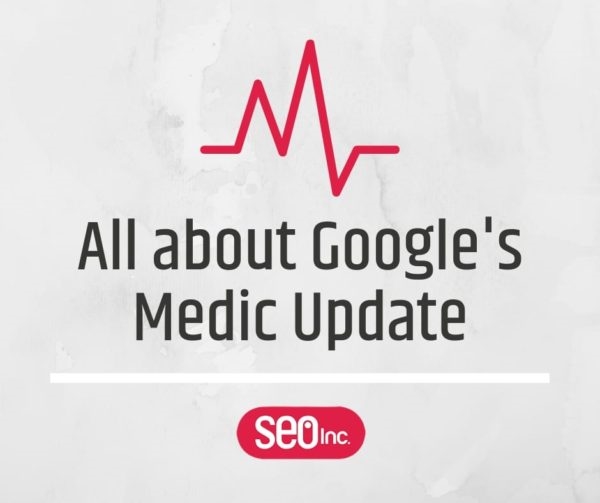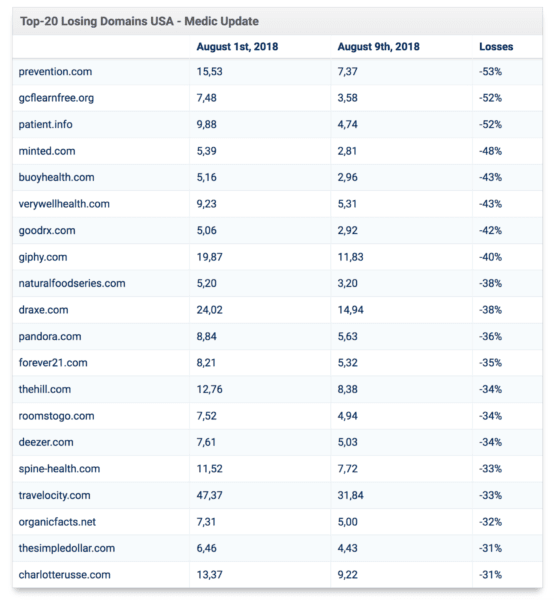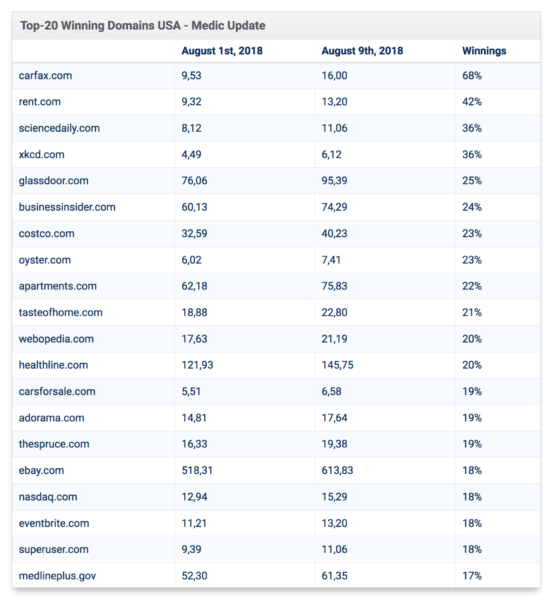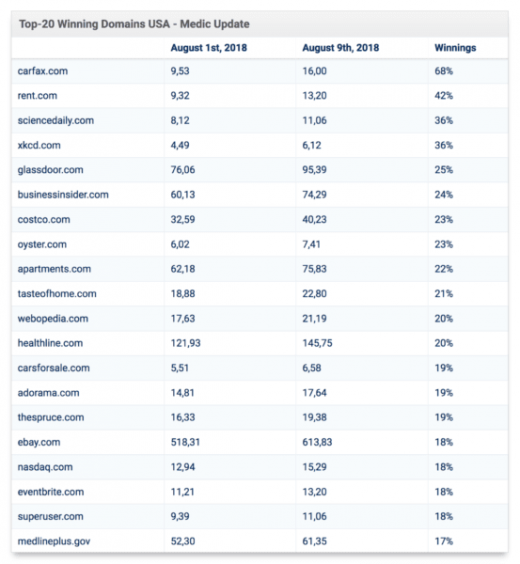What Was Google’s Medic Update? And What Sites Did It Affect
— July 15, 2019
What was Google’s Medic Update?
In August, Google released a significant core update, known as Google Medic, that affected SERP rankings. Many websites and blogs that were ranking on the first page lost their position, while many that were ranking much lower gained rank.
The update was previously unnamed, but as it was focused on sites related to health, wellness, and medicine, Barry Schwartz dubbed it the Medic Update. That said, it also affected sites in automotive, education, finance, and commerce niches. According to reports, about 56% of websites lost 5% visibility in Google SERPs.
Googles Medic Update is a core update that changed significant ranking factors. Now is the time for webmasters to take action to prevent chaos in the future from getting hit by Google updates.
What are the Impacts of the Google Medic Update?

This update hit an estimated 50% of sites that ranked on the first page. Few websites lost their ranking from the first ten results, while many websites lost visibility within the top 100 search results.
Small and medium businesses were struck, so hard that some of them were forced to close due to the lost traffic. This update was global, meaning it affected all Google results, regardless of region or language.
There’s not much to know about the update because Google hasn’t said anything specific about it – giving a fairly standard, generic, response to inquiries about it on Twitter.
As with any update, some sites may note drops or gains. There’s nothing wrong with pages that may now perform less well. Instead, it’s that changes to our systems are benefiting pages that were previously under-rewarded….
— Google SearchLiaison (@searchliaison) March 12, 2018
As with any update, some sites may note drops or gains. There’s nothing wrong with pages that may now perform less well. Instead, it’s that changes to our systems are benefiting pages that were previously under-rewarded….
— Google SearchLiaison (@searchliaison) March 12, 2018
Data from Sistrix revealed the top 20 domains that lost traffic and rankings, along with the top 20 domains that saw gains as a result.


Why Did Google Release the “Medic” Update?
The primary reason Google implemented this update was to improve the accuracy of search results, by listing results according to the user intent behind the search. As such, this update is mostly related to on-page optimization, where Google is focused on content, design, and user experience as part of their overall ranking factors.
If your website is built with nothing but scraped content, copycat content, or content that lacks any real value to readers, then you’re going to have trouble ranking – as has been the case for quite some time. If you’ve been focused on providing valuable content to your audience, you won’t have to worry as much, but it’s still an excellent time to review your site for potential improvements.
Was Your Site Hit? How to Recover from Google Medic Update
According to Google, no fix will help you recover the rankings you lost if your site was negatively affected. This is frustrating for website owners because at least with major updates like Penguin and Panda, Google offered advice on how to recover.
That’s not to say all hope is lost. We know enough about how Google works to at least come up with a few theories on how you can recover.
Focus on E.A.T. E.A.T. stands for expertise, authoritativeness, and trust. Google wants to provide its users with the most credible and relevant results. One of the ways to establish this is with an about page that seriously flaunts why you are a qualified business in your niche. Highlight any awards or recognition you’ve received. Provide clear signs of authority.
Make sure your content matches user intent. E.A.T. can only work well for you if you’re creating quality content that matches the user’s intent. Match keyword phrases to their intent and craft content accordingly. Queries like “What is…” are for informational content, whereas keywords like, “buy,” “affordable,” or “discount” signal purchase intent, so you should aim to serve your readers with product pages, or at least links to the products they’re looking for.
Keep focusing on known algorithm factors. Do what you can to improve things like page speed. Make sure your site is mobile-friendly, and if you haven’t already, switch your website over to https. Look at the technical aspects of your website and make sure it is technically sound.
Ultimately, while there’s no clear cut fix, as long as you stick to creating a site that’s based on the updated quality raters guidelines, you’ll at least be set up for higher rankings in the future. There’s no reason to take Google’s “there’s no fix” word as an excuse to be lazy. All it means is you must work harder to ensure you’ve got quality content.
Digital & Social Articles on Business 2 Community
(25)


